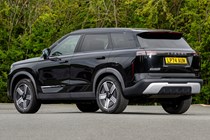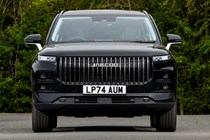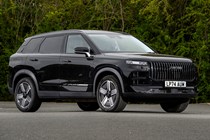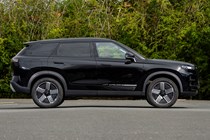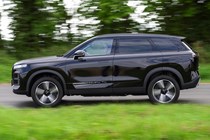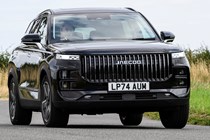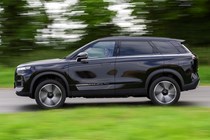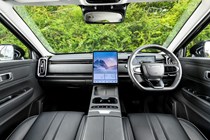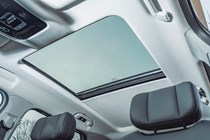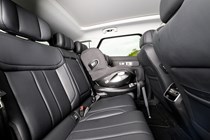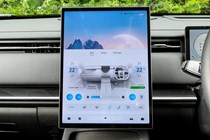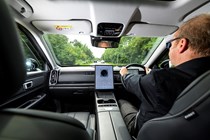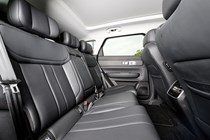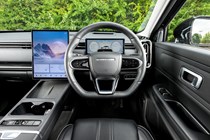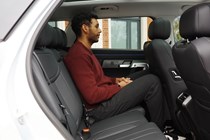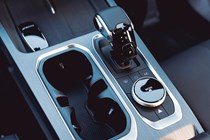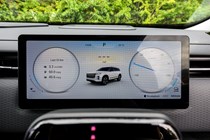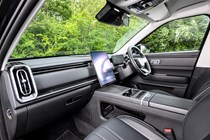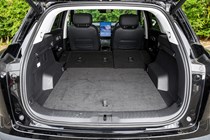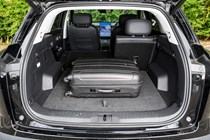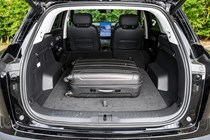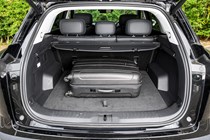JAECOO 7 engines, drive and performance
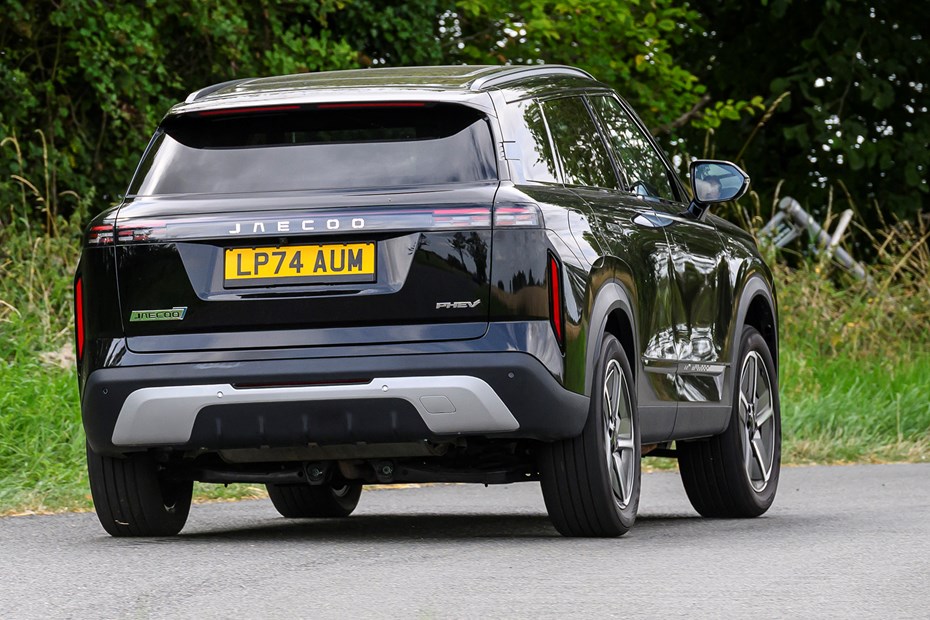
- Two- and four-wheel drive available
- Good useable driving range for PHEV
- Simple engine choice
Jaecoo 7 petrol engine
The 1.6-litre turbo petrol offers 145hp and 290Nm of torque (pulling power), which delivers steady progress rather than lively performance. The 0-62mph time is 10.3 seconds, which stretches to 11.8 seconds in heavier four-wheel drive guise. That puts it a step behind equivalent petrol Skoda Karoq, which with its excellent 1.5 TSI engine feel perkier thanks to better power delivery.
Around town, the petrol Jaecoo 7 keeps pace with traffic well enough, but you need to work the engine harder for quick overtakes or getting up to motorway speeds. This is where the refinement suffers – push it beyond the mid-range and the engine becomes coarse, with a gruffness that’s masked far better in the SHS. The extra weight of the AWD system blunts performance further.
Compared with a Nissan Qashqai 1.3 DIG-T, the Jaecoo feels a little heavier on its feet and slower to react to throttle inputs. Against a Kia Sportage 1.6 T-GDi, it again trails for outright urgency. In short, the petrol engine is fine for relaxed driving and light-load work, but if you want the more effortless and refined experience, the plug-in hybrid is the clear choice.
Jaecoo 7 plug-in hybrid
The SHS plug-in hybrid is the performance leader in the Jaecoo 7 line-up. Its combination of a 1.5-litre turbocharged petrol engine and two electric motors delivers 204hp and 375Nm of torque. This gives it noticeably stronger low-speed punch than the petrol version, with instant electric motor assistance making it feel brisk in town and confident when overtaking.
The 0-62mph time of 8.5 seconds is not hot-hatch quick, but it’s more than enough for family SUV. One of its strengths should be the smooth way it delivers its power – on paper, the combination of electric motors and petrol engine ought to blend seamlessly. In practice, though, we’ve found the plug-in drivetrain can be a little clunky.
It isn’t always consistent in the way it meters out its power, and if you’re not careful with the throttle, it’s all too easy to light up the front wheels when pulling out of a junction, even when you were aiming for a smart, tidy getaway. This lack of finesse takes the shine off what could otherwise be an impressively refined system.
At motorway speeds, the SHS still has enough in reserve to accelerate without fuss, and the electric boost helps avoid the strained engine note you get in the petrol version. In terms of outright performance, it’s a strong showing for the money.

What’s it like to drive?
- Easy to drive around town
- PHEV is a quiet cruiser
- Stable handling, indifferent ride
On paper the Jaecoo 7 should suit urban and suburban drivers well, but our time behind the wheel showed it’s not without quirks. The steering is inconsistent – light and vague at low speeds, but a little too sharp and direct on the motorway, making long-distance runs tiresome. Owners may get used to this, but for us it makes the car feel unsettled on faster roads.
Ride comfort is also unimpressive. The 7 looks under-wheeled with its big-profile tyres, yet you still feel a lot of surface imperfections through the suspension. It’s a busy ride and a little under-damped, so it fidgets over patched-up tarmac more than you might expect from something that’s clearly tuned for comfort.
The plug-in hybrid still comes out ahead, and when it’s behaving, it can be quiet and relaxed. Brakes are progressive and easy to modulate, and we found the driver-assistance systems straightforward to control via the swipe-down menu, with deactivation simpler here than on many rivals.
Unfortunately, the steering-column-mounted gear selector lets the side down. It’s awkward to use, and selecting D or R can feel hit-and-miss, which is frustrating when you’re mid-three-point-turn and holding up traffic. The petrol version feels lighter on its feet, but the same steering and ride traits apply.



